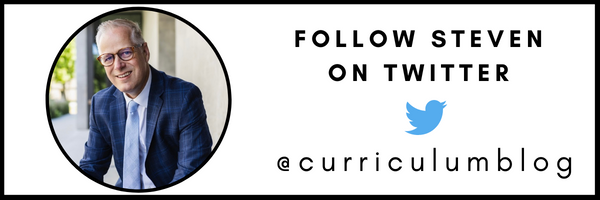TL;DR:
- Sometimes school leadership teams wait to get buy-in before completing an action.
- Waiting for buy-in can cause delays in implementation.
- Collective commitment means putting the kids first rather than forming an adult-centric school.
Waiting for Buy-In
When principals or school improvement teams attempt to implement a new program or initiative, it is common to hear the phrase, “We will wait until we get buy-in before we move to full implementation.” Leading change is complex and challenging. Leaders often seek consensus rather than full commitment. We want to call this a pilot project is code for “We don’t have enough buy-in yet.”
Fill in the Blank
We will begin implementing the district’s curriculum once we have more ____________________.
Our staff believes in the basic premise of standards-based grading, but we don’t have ____________________.
Our school has developed common formative assessments, but we don’t have enough ____________________.
Buy-In
School teams should honor teacher voice, collective bargaining, and principal input. Honoring professional experience and the voice of educators is essential. Buy-in can become a barrier to implementation when staff agrees to wait for consensus. While there is no harm in establishing buy-in, collective commitments create a sense of purpose and urgency. Some schools are adult-centric, rather than student-centric. In an adult-centric school, it is more convenient to wait for 100% buy-in rather than doing what is best for the students we serve. If a school knew that 50% of the students were reading below grade level, would it be acceptable to inform their parents that we will implement reading support and research-based reading strategies once we have complete buy-in from the staff?
Buy-in can become a barrier to implementation when staff agrees to wait for consensus. Click To TweetCollective Commitments
“Collective commitments (or values) represent the promises made among and between all stakeholders that answer the question, ‘What must we do to become the organization we have agreed we hope to become?’” (DuFour, DuFour, Eaker, & Many, 2010).
Teams can approach a new initiative from two different lenses:
Option A: We understand that this change will support students, but we aren’t quite convinced that the timing is right. Perhaps we should wait until we have buy-in from 80 percent of our staff.
Option B: As a school staff, we will commit to “X.”
[scroll down to keep reading]Knowing-Doing Gap
School teams often get stuck in the “Knowing-Doing Gap.” Pfeffer and Sutton (2000) described the knowing-doing gap as “the amount of difference between the knowledge an organization has to enhance organizational performance and the extent of their actions consistent with that knowledge.” Some schools train staff, conduct a book study, and develop an implementation plan, but the lack of commitment results in disjointed results.
The following sentence stems will support school teams in developing collective commitments:
- How might we _________________?
- In order for students to succeed, we must ____________________.
- The academic interventions our students need include ____________________.
- One instructional strategy we will commit to this week is _____________________.
- Based on formative assessment data, we should _________________________.
- Because we believe __________________, we are committed to ______________.
Are You Committed?
Commitment is a result of intentional actions aligned towards accomplishing the end in mind. Imagine if someone decided to lose weight. Would it benefit the person to stop eating fast food once they buy-in to the research behind healthy eating? It seems more logical to develop collective commitments with a coach or accountability partner and implement the plan.
Commit to continuous improvement through collective commitments. Determine 2-3 things that must be done in order for your team to succeed. Develop Collective Commitments that reflect the school’s priorities. Timperley (2011) described a “mindset that includes an intense moral purpose focused on promoting deep understanding.” In other words, ‘Because we believe __________________, we are committed to ___________________________.”
References
DuFour, R., Eaker, R., & Many, T. (2010). Learning by doing: A handbook for professional learning communities at work (2nd ed.). Solution Tree.
Pfeffer, J., & Sutton, R. I. (2000). The knowing doing gap. Harvard Business School of Publishing.
Timperley, H. (2011). Realizing the power of professional learning. Open University Press.
About Steven Weber
Dr. Steven Weber is a curriculum leader. He has served on multiple state and national boards. His areas of research include curriculum design, multiplying leaders, professional learning, and school leadership.




